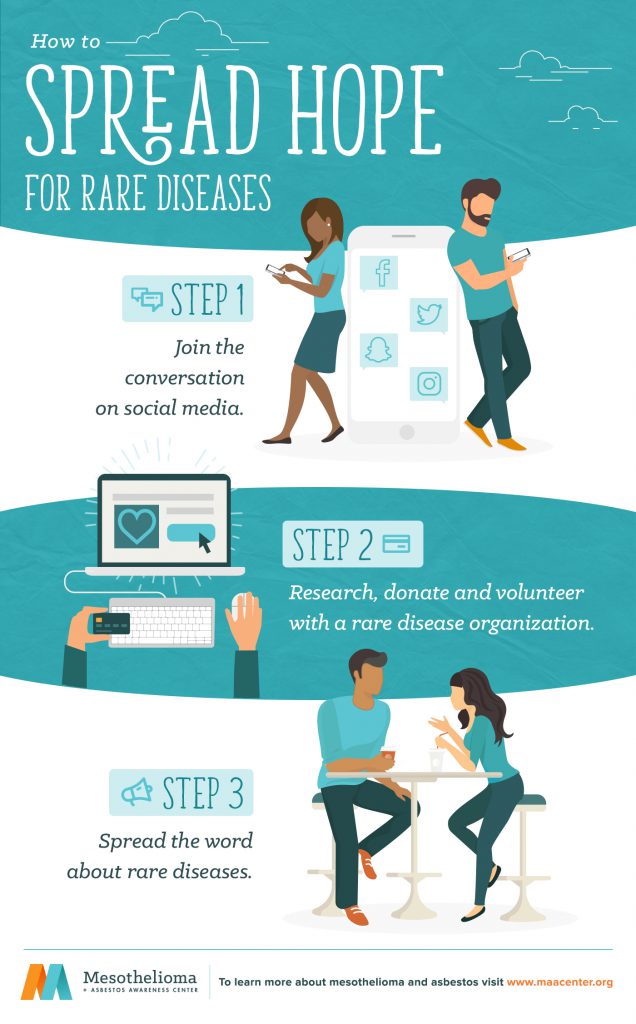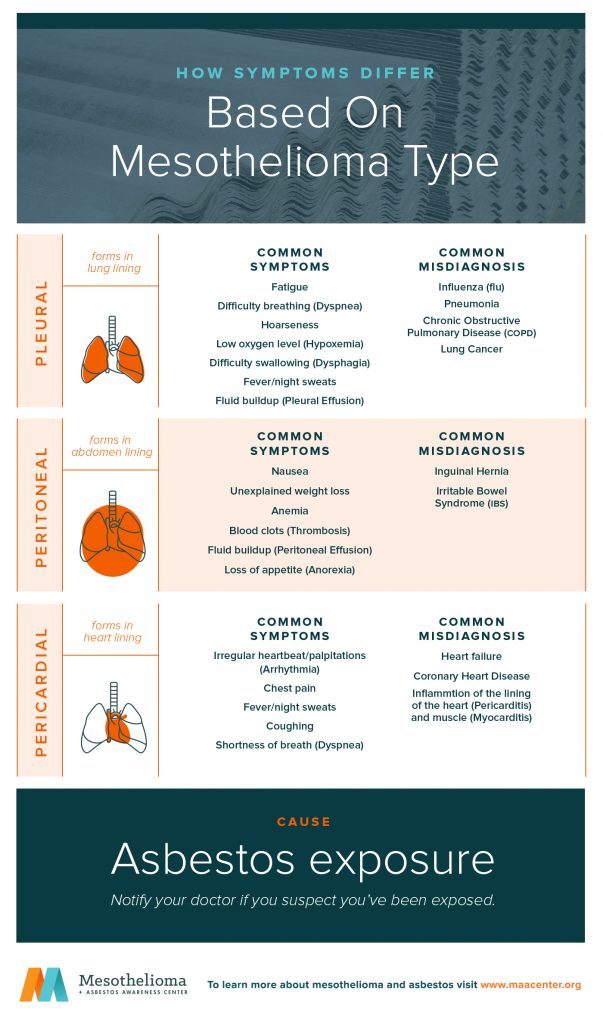
Mesothelioma Awareness and Occupational Health & Safety

Written by: Joe Mangiardi, NES, Inc.
 Mesothelioma Awareness Day is a chance to spread the word about mesothelioma and asbestos-related illnesses.
Mesothelioma Awareness Day is a chance to spread the word about mesothelioma and asbestos-related illnesses.
Mesothelioma Awareness Day 2017
Mesothelioma Awareness Day will be on September 26, 2017. It was first established in 2004 by members of the Mesothelioma Applied Research Foundation (Meso Foundation) to aid in getting the word out about mesothelioma and to help secure funding for this deadly and currently incurable cancer.
Various organizations will be ramping up to Mesothelioma Awareness Day starting September 1. These include Meso Foundation, whose members encourage supporters to share photos of themselves wearing blue on social media platforms with an explanation of why it is so important to raise awareness about mesothelioma and other diseases related to asbestos exposure (for more information, see the Meso Foundation publication Mesothelioma Awareness Day). On the day of the event, Tuesday, September 26, the Asbestos Disease Awareness Organization (ADAO) will be hosting a Twitter chat from 12:00 p.m. – 1:00 p.m. (ET) (visit ADAO on Facebook for more information on this September 26 “tweet chat”).

Mesothelioma Awareness Day is September 26, 2017 – spread hope!
What is Mesothelioma?
Mesothelioma is a very aggressive cancer known to be primarily caused by the inhalation of asbestos fibers and other elongate mineral particles via occupational and environmental exposure. According to a Centers for Disease Control and Prevention (CDC) report entitled Malignant Mesothelioma Mortality — United States, 1999–2015 , “malignant mesothelioma can develop after short-term asbestos exposures of only a few weeks, and from very low levels of exposure. There is no evidence of a threshold level below which there is no risk for mesothelioma. The risk for mesothelioma increases with intensity and duration of asbestos exposure.” Named after the location within the body in which it originates, mesothelioma develops in three main forms:
- Pleural mesothelioma develops in the lungs and is the most common type, accounting for nearly 2,500 new cases per year.
- Peritoneal mesothelioma is less common (about 20% of all cases) and affects the abdominal lining.
- Pericardial mesothelioma is the rarest variety (approximately 1% of all cases) and is found in the lining of the heart.
The CDC report also states that, during the period from 1999 to 2015, the annual number of malignant mesothelioma deaths has increased from 2,479 in 1999 to 2,579 in 2015, representing a 4.8% overall increase.
Sadly, these numbers are expected to continue to climb. Mesothelioma has an extremely long latency period, meaning that it often takes from 20-50 years following causal exposure—and sometimes much longer—to develop in an individual and become symptomatic. Due to this latency period and the prevalence of asbestos-containing materials across numerous industries throughout much of the twentieth century, mesothelioma is most commonly diagnosed in the elderly. Prognosis is dismal, with most patients living between six months to two years following diagnosis. Early detection can somewhat improve this outlook, and, if sufficient mesothelioma awareness can be fostered in affected communities and engaged organizations, new treatment methods may emerge through funded research.
Symptoms
As with many maladies, mesothelioma has a wide range of potentially telling symptoms, and so diagnosis can be difficult. Misdiagnoses are common. A biopsy is the most accurate diagnostic tool, but due to its invasive nature, imaging scans and blood tests are commonly performed first. To learn more about diagnosis and symptoms of mesothelioma, view the Mesothelioma + Asbestos Awareness Center information page on mesothelioma diagnosis.

Mesothelioma symptoms are various and can often be confused with those of other, more common ailments and diseases.
The above video provides mesothelioma awareness information in the way of common sources of asbestos, how asbestos exposure causes mesothelioma, how the disease affects the body, and common treatment options.
Asbestos
The term asbestos applies to minerals having a particular crystalline structure that have been, and continue to be, utilized in various commercial applications due to favorable properties such as high tensile strength, flexibility, and resistance to heat. When asbestos fibers are disturbed or otherwise stressed, they break quite easily and form sticky microscopic dust particles that stubbornly adhere to most surfaces and, if inhaled, do not break down in the body. This can result in mesothelioma and other serious health conditions including asbestosis and lung cancer.
There are six common types of asbestos mineral fibers:
- Actinolite
- Amosite
- Anthophyllite
- Chrysotile
- Crocidolite
- Tremolite
Of these, chrysotile is by far the most widely used, accounting for over 90% of asbestos used in the United States. It falls under the class serpentine asbestos and has curled, particularly pliable fibers, as opposed to the straight, needle-like fibers of the other five, which are in the class amphiboles asbestos. Chrysotile can be found in serpentinite rocks throughout California and across the United States.
 Pictured above: chrysotile asbestos-containing serpentinite rock; notice the fibers most visible in the close-up image on the right.
Pictured above: chrysotile asbestos-containing serpentinite rock; notice the fibers most visible in the close-up image on the right.
Occupational Health & Safety: Mesothelioma Awareness on the Job
The Mesothelioma + Asbestos Awareness Center estimates that 125 million people worldwide are exposed to asbestos at the workplace on an annual basis including 1.3 million construction workers. As a consequence, asbestos is the number one cause of occupational cancer in the United States.
At the height of asbestos’ popularity there were over 3,000 asbestos-containing products and materials in mass production. These include: vinyl flooring, patching compounds, textured paints, acoustic ceiling tiles, insulation (all types), roofing shingles, home appliances, cement pipes, and many more.
The biggest occupational exposure risk today comes when workers demolish, repair, modify, or otherwise interact with older buildings or materials. These risks tend to be most elevated for construction, plant, shipyard, mining, and railroad workers and for firefighters, engineers, roofers, electricians, mechanics, and military personnel (veterans are particularly vulnerable to developing mesothelioma). Any time work is going to be done with or on materials suspected to contain asbestos, employers and their employees must take proper precautions to protect the health and safety of those on and around the worksite. These precautions include ordering asbestos sampling tests, implementing proper site containment measures, and wearing appropriate personal protective equipment (PPE).
It is important to note that you do not have to be at work to be at risk. Those performing do-it-yourself home repairs need to understand that older building likely were built with an array of asbestos-containing materials; if the building is not very old, refurbished materials could still contain asbestos. Even if not performing home repairs, older homes in particular can present a host of asbestos-related risks to inhabitants.
Mesothelioma Awareness: Are You Safe?
Unfortunately, virtually everyone is at risk of asbestos exposure. Asbestos can be found naturally, posing a potential risk to humans without any mining or manufacturing processes having been involved. These asbestos sources are termed naturally occurring asbestos. While no amount of exposure is ever technically considered to be safe, incidental, non-occupational exposure will usually not be at significantly dangerous levels. However, due to the extremely long latency period following initial causative exposure to asbestos or other elongate mineral particles, linking the development of mesothelioma to any one causative exposure source can be difficult; consequently, causality of certain sources at lower concentration levels can be difficult to ascertain.
Complicating matters, and despite general knowledge that asbestos is highly hazardous, many people are not aware of just how many products still do contain asbestos. In 1989 the Environmental Protection Agency (EPA) banned asbestos, but shortly thereafter a federal court partially reversed this ban, ruling that only new asbestos products were illegal; products already in use were exempt from the ban. A January 26, 2017 article by Mesothelioma + Asbestos Awareness Center entitled 5 Types of Products That Still Contain Asbestos lists some surprising categories of asbestos-containing products still manufactured today. These are: vehicle parts, insulation, construction materials, fireproof clothing, and potting soils.
Naturally Occurring Asbestos in California
In September 2003 the EPA was contacted to investigate naturally occurring asbestos exposure in El Dorado Hills, California. In October 2004 public areas near Oak Ridge High School were tested. EPA inspectors went so far as to suit up in PPE and play some baseball to test the amount of asbestos that would be stirred up into the air during a game (for pictures of the spectacle, click here). The goal was to assess the propensity for such naturally occurring particles to become hazardous to citizens. The inspectors-turned-players collected over 450 samples from the air and soil. Mitigation efforts were ultimately performed by the El Dorado Union High School District and EPA; however, it was demonstrated that the potential exists for other areas that are sources of naturally occurring asbestos to be affected by the same hazards (to learn more about the EPA’s asbestos assessments in California, view the Agency for Toxic Substances and Disease Registry article Final Report on Oak Ridge High School Asbestos Exposures).
Mesothelioma Awareness: Conclusion
EPA and OSHA restrictions on asbestos-containing products and materials cannot fully combat the issues faced by such a depth of past and projected future exposures to asbestos. As the numbers associated with mesothelioma morbidity continue to worsen, we are reminded that the full scope of asbestos-related diseases has yet to be revealed, and an overwhelmingly vast amount of deadly asbestos remains to be dealt with.
Mesothelioma Awareness Day is a reminder and a valuable opportunity to disseminate information about mesothelioma and other asbestos-related afflictions. With the proper funding and awareness, there is hope that one day living with, and living with worries of, such afflictions will be a thing of the past.
References:
Mesothelioma Applied Research Foundation Publication: Mesothelioma Awareness Day
Mesothelioma + Asbestos Awareness Center Information Page: Mesothelioma
Mesothelioma + Asbestos Awareness Center Information Page: Mesothelioma Diagnosis
Centers for Disease Control and Prevention Report: Malignant Mesothelioma Mortality — United States, 1999–2015
California Department of Conservation Publication: Asbestos
Mesothelioma Applied Research Foundation Publication: Asbestos Exposure Information – What Is Asbestos?
Mesothelioma Applied Research Foundation Video: What is Mesothelioma? – 2015 Symposium
Mesothelioma + Asbestos Awareness Center Article: National Occupational Health and Safety Week: Preventing Asbestos Exposure
Mesothelioma Applied Research Foundation Information Page: Asbestos Information
Mesothelioma + Asbestos Awareness Center Article: 5 Types of Products That Still Contain Asbestos
Environmental Protection Agency Archives Article: Naturally Occurring Asbestos
Environmental Protection Agency News Release: U.S. EPA Presents Data on Naturally Occurring Asbestos Assessment in El Dorado Hills
Agency for Toxic Substances and Disease Registry Article: Final Report on Oak Ridge High School Asbestos Exposures
